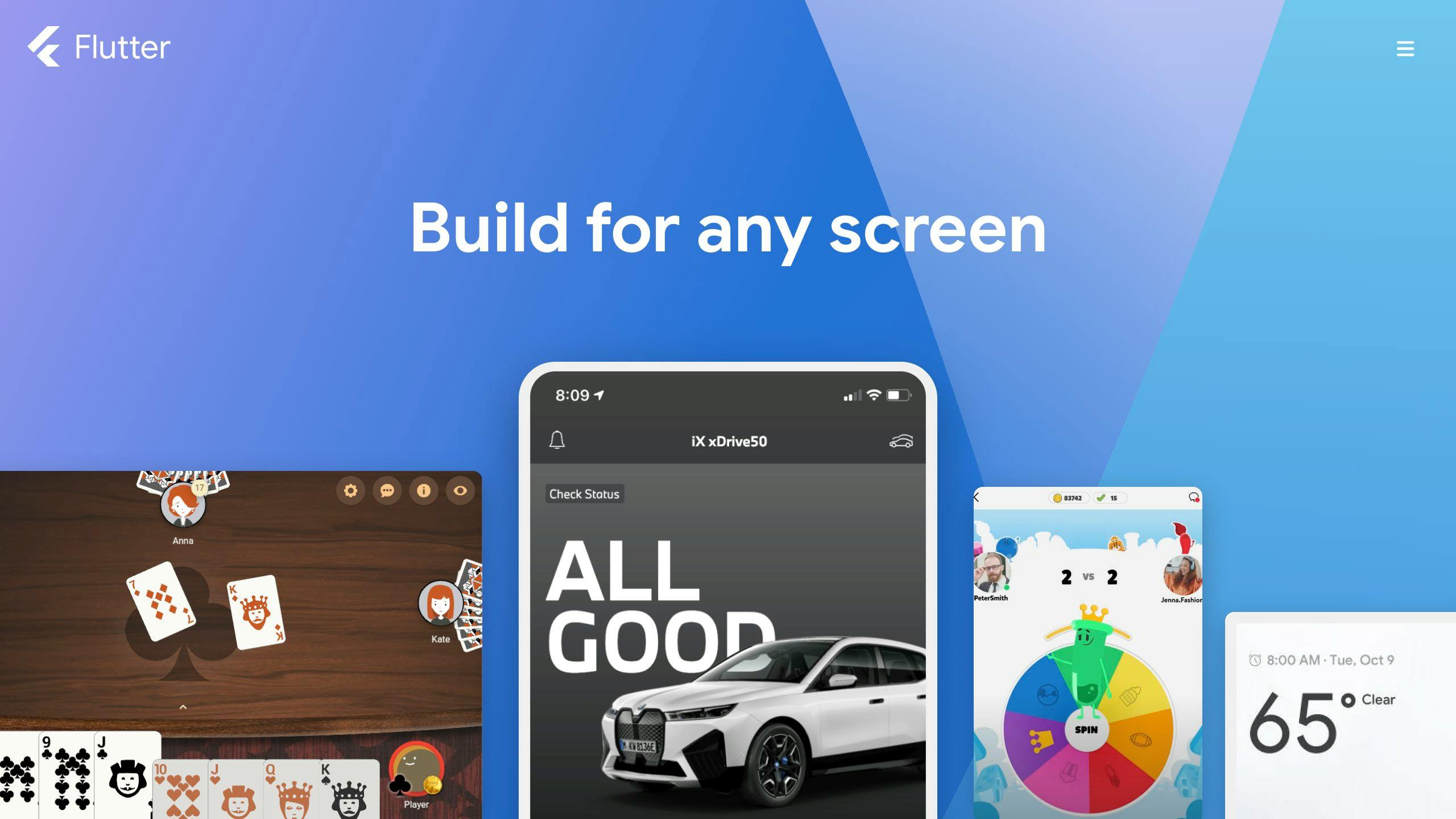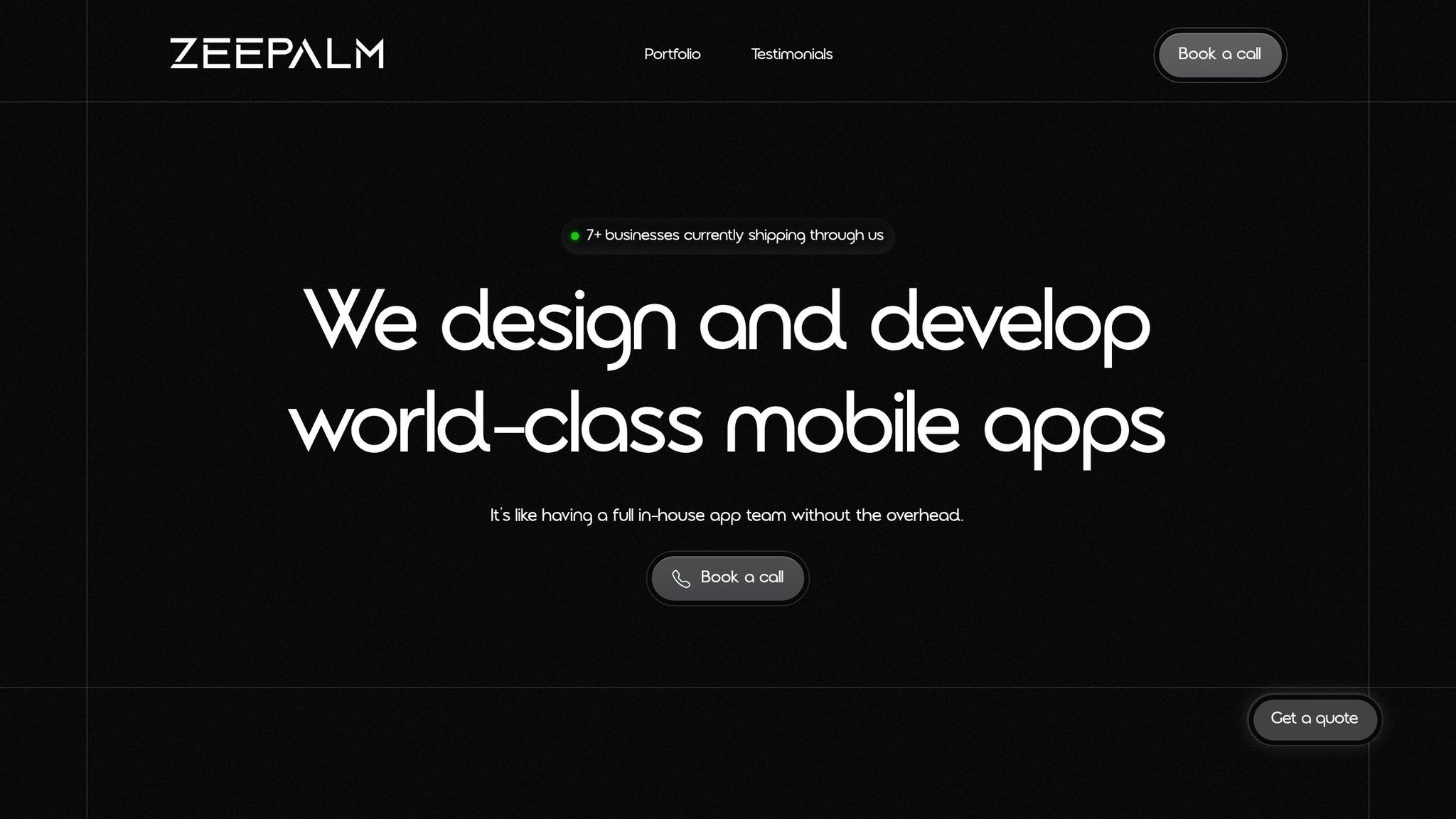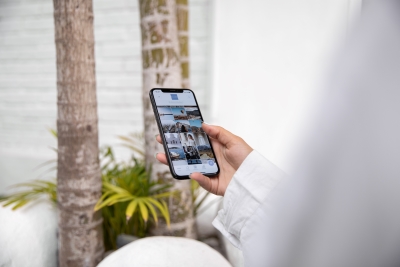Transforming your Flutter mobile app for the web is a strategic move to increase its reach and functionality. Here's a quick guide to simplify the process:
- Ensure Required Tools and Knowledge: Update to the latest Flutter and Dart SDKs, and enable web support in Flutter.
- Web Setup and Responsive Design: Create a web directory in your project and adjust your app's design to look great on larger screens.
- Navigation and Interactions: Implement web-friendly navigation and adapt your app for desktop-specific interactions.
- Testing and Debugging: Thoroughly test your app on different devices and browsers, and use debugging tools to iron out any issues.
- Deployment: Choose a hosting platform like Firebase Hosting and optimize your app for performance and SEO.
By following these steps, you can create a seamless web version of your Flutter mobile app, reaching more users and enhancing their experience across devices.
Prerequisites for Transition
Before you can move your Flutter mobile app to the web, there are a few things you need to have ready:
Flutter SDK
First up, make sure you have the latest version of the Flutter SDK. This is the toolkit that lets you build apps for different platforms, including the web.
Dart SDK
Flutter apps are made using Dart, so you'll also need the Dart SDK. Check that you're using the newest version.
Web Support
You need to turn on web support in your Flutter setup. Open up your project in the terminal and type this in:
flutter config --enable-web
This step makes sure you have the tools needed to make your app work on the web.
IDE and Plugins
Choose an editor like Visual Studio Code or IntelliJ and install the Flutter and Dart plugins. These tools help you write, test, and fix your code.
Flutter and Dart Knowledge
It's important to know the basics of Flutter and Dart. Understanding how Flutter's widgets work, how to move around in the app, and how to manage data will help you adapt your mobile app for the web. Make sure you're comfortable with:
- How Flutter organizes its components
- Navigating through the app
- Keeping track of information across the app
- Dart's types of data and functions
With these steps covered, you're all set to start turning your Flutter mobile app into a web app!
Step 1: Preparing Your Flutter App for the Web

Creating a Web Directory
To start making your Flutter mobile app work on the web, first go to your project's main folder in the terminal and type:
flutter create .
This command sets up everything you need to build your app for web use.
Verifying Plugin Support
Now, make sure all the extra tools or plugins you added to your app are okay to use on the web. Here's how to do it:
- Look at your
pubspec.yamlfile to see your app's plugins. - Check each plugin on the pub.dev website to see if it's web-friendly.
- If a plugin doesn't work on the web, try to find a different one that does.
- For any code that's specific to mobile or web, use an
if-elseblock to separate them like this:
if (kIsWeb) {
// web-only code
} else {
// mobile-only code
}
Doing this helps avoid problems when your app runs in different environments.
With your app's setup and plugins ready for the web, you're all set to tweak your app so it looks good and works well on bigger screens.
Step 2: Making Your App Responsive
To make your Flutter mobile app look good on both web browsers and larger screens, you need to adjust how it appears so it can change size and layout smoothly. Here's how to do it in simple steps:
Use LayoutBuilder
Think of LayoutBuilder as a tool that helps your app figure out how much space it has. Depending on the screen size, you can decide how your app should look. For example, for smaller screens, you might want a simple layout, but for bigger screens, you could go for something more spread out:
LayoutBuilder(
builder: (context, constraints) {
if (constraints.maxWidth < 600) {
// Use a simple layout
} else if (constraints.maxWidth < 900) {
// Use a bit more complex layout
} else {
// Go all out with a complex layout
}
}
)
Use GridView.builder for Lists
When you have lists or grids, GridView.builder helps them adjust to the screen size. You can control how they scroll and how much space they take up.
Try Out Responsive Packages
There are tools made by other developers that can help you make your app adjust to different screens. These tools handle the tricky parts for you and give you widgets that work well on any device.
Design for Every Screen
Make different versions of your app's layout for phones, tablets, and computers. Use tools like Expanded and Flexible to make your widgets fit the screen nicely. And, use things like SizedBox and Container to make sure everything is the right size.
Test on Different Devices
Always check how your app looks on different devices while you're building it. This way, you can make sure it looks great whether it's on a phone, a tablet, or a computer screen.
By keeping these points in mind, you can make sure your app is enjoyable for everyone, no matter what device they're using.
Step 3: Handling Navigation and Platform-Specific Interactions
Navigation Adjustments
To make sure your app knows where to go on the web, you can use something called the beamer package. Here's how to set it up:
- First, add beamer to your app's pubspec.yaml file:
dependencies:
beamer: ^0.8.4
- Next, make sure your app uses a
Beamerwidget:
void main() {
runApp(MyApp());
}
class MyApp extends StatelessWidget {
@override
Widget build(BuildContext context) {
return MaterialApp.router(
routeInformationParser: BeamerRouteInformationParser(),
routerDelegate: BeamerDelegate(
locationBuilder: SimpleLocationBuilder(
routes: {
'/': (context) => HomeScreen(),
'/settings': (context) => SettingsScreen(),
},
),
),
);
}
}
- Instead of regular pages, use
BeamPagefor animations and moving between pages. - Use
BeamerRouteInformationParserto make sure it works well with Flutter's way of moving around in the app.
This setup helps your app know where to go, show animations when changing pages, and work well with web links.
Browser- and Desktop-Specific Interactions
To make your app nicer to use on computers and web browsers, you can add things like:
- Scrollbars - Add scrollbars to show where you are on a page with the
Scrollbarwidget. - Hover Effects - Use
MouseRegionto make things happen when you hover over them. - Keyboard Shortcuts - Make it easy to do things like go back or open menus with keyboard keys.
- Context Menus - Right-click menus can be added with
ContextMenu.
You can also check if the app is being used on the web or a phone to only show these features when needed, like this:
if (kIsWeb) {
// Web-only code
} else {
// Mobile-only code
}
By doing these things, your app will feel right at home whether it's being used on a phone, a computer, or a tablet. Everyone gets a smooth experience no matter the device.
sbb-itb-8abf120
Step 4: Testing and Debugging
Before you share your Flutter web app with the world, it's important to check it works well on different web browsers and devices. Here's how to make sure your app is ready for everyone:
Set Up Emulators and Simulators
Flutter lets you use tools like Chrome and Edge to see how your web app looks on different browsers. For checking on phones, you can use the iOS Simulator and Android Emulator. This helps you spot and fix any weird behaviors or issues.
Use DevTools for Diagnostics
Tools like Chrome and Edge DevTools are super helpful for finding and fixing problems. They let you:
- See how your app looks on different screen sizes
- Check how fast your app runs
- Find and solve errors in your code
- Look at network requests
These tools work well with Flutter, making it easier to spot where things might be going wrong.
Try on Actual Devices
Testing on real devices is key. This way, you catch issues that might not show up on simulators or emulators. Connecting your phone or computer to your coding setup can help you test more efficiently.
Automated Testing
Automated tests help make sure your app works right. You can write tests that check if small parts of your app (like buttons) work as they should. Bigger tests can check if whole parts of your app (like signing up) work smoothly.
Beta Testing and User Feedback
Letting a small group of people try your app before it's fully out can give you a lot of useful feedback. Ask them to tell you what they think, and use their suggestions to make your app better.
Testing your app in all these ways helps you make sure it's as good as it can be. Using tools like emulators, real devices, and feedback from real users, you can fix problems and make your app great for everyone.
Step 5: Deploying Your Flutter Web App
Putting your Flutter web app online means people can use it in their web browsers. Here are some ways to do that.
Firebase Hosting
Firebase Hosting is a common choice for Flutter apps. Here's how to put your app on Firebase:
- Check if your Flutter project is set up for the web.
- Add
firebase_coreandfirebase_hostingpackages. - Use
flutter build webto prepare your app for the web. - Set up Firebase Hosting with your project folder.
- Tell Firebase Hosting to use the
build/webfolder. - Put your app online with
firebase deploy.
Your app is now live on a Firebase URL. You can update and redeploy your app as needed.
Other Hosting Options
Besides Firebase, you can also use:
- Azure Web Apps
- Amazon S3
- Google Cloud Platform
- Heroku
- Netlify
These services usually have steps just for Flutter web apps. Remember to build your web app first.
Optimization and Maintenance
After your app is online, keep it running well by:
- Making sure it loads fast and isn't too big.
- Watching for downtime, traffic, and errors.
- Using HTTPS for security.
- Backing up your data regularly.
- Updating your app and testing new changes.
These steps keep your app fast, safe, and available.
SEO Considerations
To help people find your app through search engines:
- Find and use the right keywords.
- Create useful content.
- Add descriptions and other metadata for search engines.
- Use clear HTML like headers and lists.
- Describe images well.
- Fix any errors that stop search engines from seeing your site.
Good SEO makes your app easier to find.
Choosing a reliable hosting service and following these tips can help your app reach more people.
Performance Optimization
Making your Flutter web app run smoothly is super important for a good user experience. Here are some steps to check and boost your app's performance:
Use Lighthouse
Lighthouse is a handy tool for checking how well your web app is doing. Here's how to use it:
- Open your web app in Chrome and open the DevTools (right-click and select 'Inspect').
- Click on the 'Lighthouse' tab.
- Click 'Generate report'.
It'll tell you how fast your app loads, how well your images and code are optimized, if your app is easy to use for everyone, and how it does in search engines.
Analyze Build Output
When you build your Flutter web app, look at the details it gives you:
flutter build web --release --verbose
This tells you about:
- How big your app is
- If it got rid of unused code
- How long the build took
Profile with DevTools
Chrome's DevTools has a 'Performance' tab that helps you find slow parts. Look for things like slow frame rates, too much memory use, or code that runs too often.
Optimize Images
Pictures can make your app slow. To fix this:
- Choose the right file type (like WebP).
- Only load pictures when they're needed.
- Make pictures smaller or lower quality if they're too big.
- Keep pictures saved on the device if you can.
Minify JavaScript
Making your JavaScript files smaller helps your app load faster. You can turn this on with:
web:
minify: true
in your flutter.yaml file.
Use Code Splitting
Break your code into smaller parts that can load when needed, instead of all at once. This makes your app start faster.
Enable Tree Shaking
This feature gets rid of code you're not using to make your app smaller. Turn it on with:
web:
assume-no-unused-code: true
By checking your app with tools like Lighthouse, fixing slow spots, and making your resources like images and code more efficient, you can make your app faster and more fun to use.
Common Challenges and Solutions
Moving your Flutter mobile app to the web might not always be smooth. Here are some typical problems you might run into and some tips on how to deal with them.
Handling Platform-Specific Code
Sometimes, code that works great on mobile doesn't play nice with the web. This can be because:
- Some tools and plugins don't work on the web.
- Certain mobile features, like the camera, might not have direct web equivalents.
- Parts of your code might rely on mobile-only libraries.
Solutions:
- Look for plugins that also work on the web.
- Use
kIsWebto check if your app is running on the web and adjust the code accordingly. - Find different ways to offer the same features across platforms.
- Use abstraction layers to manage differences between platforms more easily.
Responsive Design Difficulties
Making sure your app looks good on any screen size can be hard. You might run into issues like:
- Layouts that don't fit well on different screens.
- Images that don't scale properly.
- Large screens having too much empty space.
- Small screens looking too crowded.
Solutions:
- Use
LayoutBuilderandMediaQueryto adjust layouts based on screen size. - Consider using responsive design tools or frameworks.
- Design layouts that scroll, so they work on any screen size.
- Tailor your UI to fit different screens by adjusting constraints and using flexible spacing widgets.
App Navigation and Routing
Web apps handle moving between pages differently, which can cause problems like:
- The back and refresh buttons not working as expected.
- Losing app state when moving between pages.
- Missing smooth transitions between pages.
Solutions:
- Use Flutter's routing tools like Beam or AutoRoute for better page transitions.
- Make sure your routing setup works with the web browser's history.
- Keep track of app state across different pages with tools like scoped models or provider.
Testing and Debugging Shortfalls
Adding web to your app testing can make things more complex, leading to issues like:
- Problems that show up on the web but not on mobile.
- Not enough tests covering both mobile and web.
- Overlooking problems that only happen in certain browsers.
Solutions:
- Use simulators and emulators to test on iOS, Android, and different web browsers.
- Take advantage of desktop browsers' DevTools for debugging.
- Make sure you have tests that specifically cover web functionality.
- Plan your tests to include checks for mobile, web, and specific browser issues.
By preparing for these common issues, you can make the transition from Flutter mobile to web much smoother.
Conclusion
Making your Flutter mobile app work on the web is a great way to let more people use it. This guide showed you how to do it step by step.
Here's a quick review of the main points:
- First, make sure your Flutter project is ready for the web and check that everything you need is up to date.
- Use tools like LayoutBuilder and GridView.builder to make sure your app looks good on any screen size.
- Change how your app moves from page to page with help from packages like beamer, and remember to add things like scrollbars for web users.
- Test your app a lot, using things like DevTools to find any problems. Try it on different devices and browsers.
- Pick where to put your app online, like Firebase or Azure, and make your app run faster by doing things like making files smaller and getting rid of code you don't need.
Moving your app to the web means more people can use it, and using Flutter helps you save time and money because you can use the same code for mobile and web. You might run into some tricky spots, like making sure your app looks good on all devices or dealing with code that only works on mobile. But, there are ways to solve these problems.
Keep making your app better by listening to what users say and trying new things. Flutter lets you do a lot across both mobile and web. With some hard work, your app can be great for everyone, no matter how they choose to use it.











